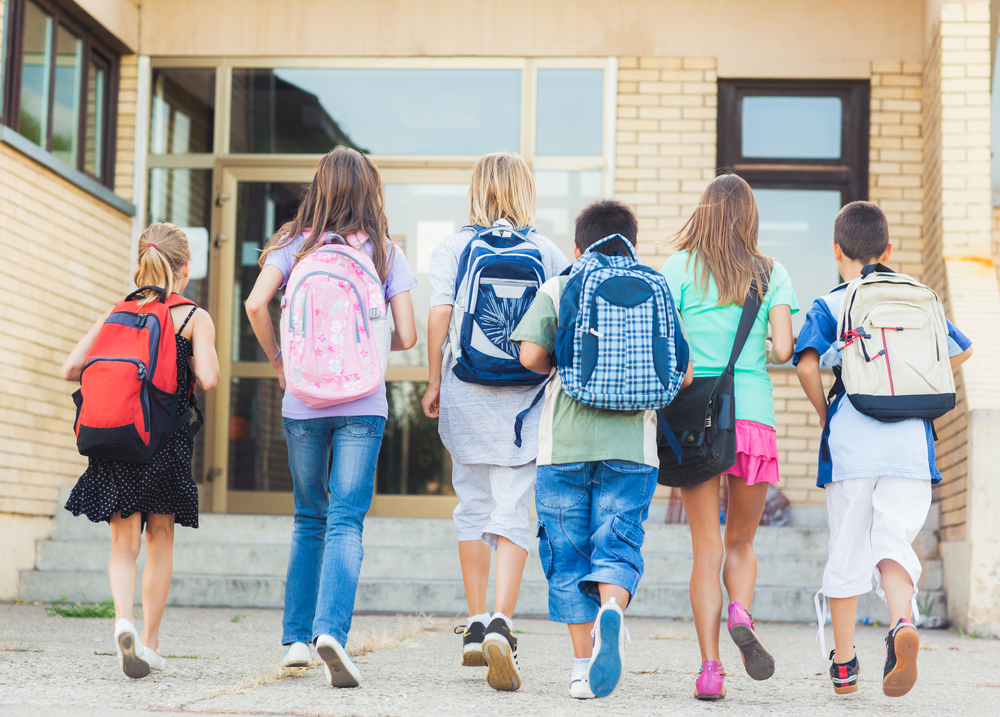
Backpacks were designed to take the stress off growing bodies as they transport their books, lunches, and extra-curricular materials to and from school, and are now often considered a necessary accessory for school-aged children. However, one in every five children are reporting low back pain, and the prevalence of low back pain in adolescents is similar to that of adults (60-80%). We know that school backpacks are associated with back pain, but why does this occur and what can we do to help prevent it?
Non-specific low back pain (back pain not due to disease/underlying conditions) makes up 85% of all back pain complaints, and often comes from overuse injuries, abnormal spinal stiffness, and/or overstretch of your muscles & ligaments. These issues can be instigated by poor posture and heavy loads, conditions which for kids, can be seen in the regular carrying of heavy school bags. Numerous studies have concluded that carrying heavy backpacks can significantly alter posture, spinal curves, the way a person walks, change the head-neck angle, and even create shoulder asymmetry. Pain results when the body can no longer appropriately compensate for these stressors. While most episodes of back pain are self-limiting and respond well to conservative therapy, episodes of back pain in adolescents are more likely to develop into low back pain in adulthood.
Top tips to limit your child’s discomfort over their schooling years include:
- Don’t overload the bag – limit backpack weight to 10% of your child’s body weight. That is, if your child weighs 40kg, their bag should not be heavier than 4kg, make use of school lockers or desks where possible, and ensure bags are emptied and re-packed on a regular basis.
- Pack heavy items closer to the spine/at the back of the pack to allow for greater stabilisation and better weight distribution.
- Ensure your child is wearing their backpack evenly across both shoulders.
- Ensure the backpack is no wider than your child’s chest.
- Position the backpack so it sits no lower than your child’s waist/hips. This position is associated with the least postural displacement.
- Where possible, customisable bags with e.g. pockets, padded shoulders, adjustable straps, and drink bottle holders will help make your child’s journey more comfortable.
Don’t be afraid to ask your chiropractor or physiotherapist if you have any concerns or are noticing changes to your child’s posture. As back pain is associated with poorer health, decrease in physical function, lower rated quality of life, and increased economical burden, it is important to remain educated and alert for any signs of dysfunction.
References
DePaula AJF, Silva JCP, Paschoarelli LC, Fujii JB, Backpacks and school children’s obesity: challenges for public health’s ergonomics, Work, 2012, 41: 900-906
Grimmer K, Dansie B, Milanese S, Pirunsan U, Trott P, Adolescent standing postural response to backpack loads: a randomised controlled experimental study, BCM Musculoskeletal Disorders, 2002, 3(10): 1471-2474
Macedo RB, Coelho-e-Silva MJ, Sousa NF, Valente-dos-Santos J, Machado-Rodrigues AM, Cumming SP, Lima AV, Gonçalves RS, Martins RA, Quality of life, school backpack weight, and non-specific low back pain in children and adolescents, Jornal de Pediatria, 2015, 9(15): 263-269
McKenzie WG, Sampath JS, Kruse RW, Sheir-Neiss GJ, Backpacks in children, Clinical orthopaedics and related research, 2003, 409: 78-84
Rodríguez-Oviedo P, Ruano-Ravina A, Pérez-Ríos M, et al, School children’s backpacks, back pain and back pathologies, Archives of Disease in Childhood, 2012;97:730-732.
Sheir-Neiss, Geraldine I., Kruse, Richard W., Rahman, Tariq, Jacobson, Lisa P., Pelli, Jennifer A. The association of backpack use and back pain in adolescents, Spine, 2003, 28(9): 922-930
